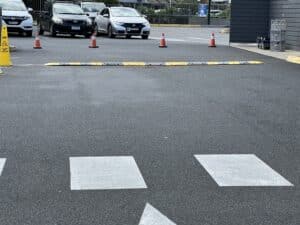
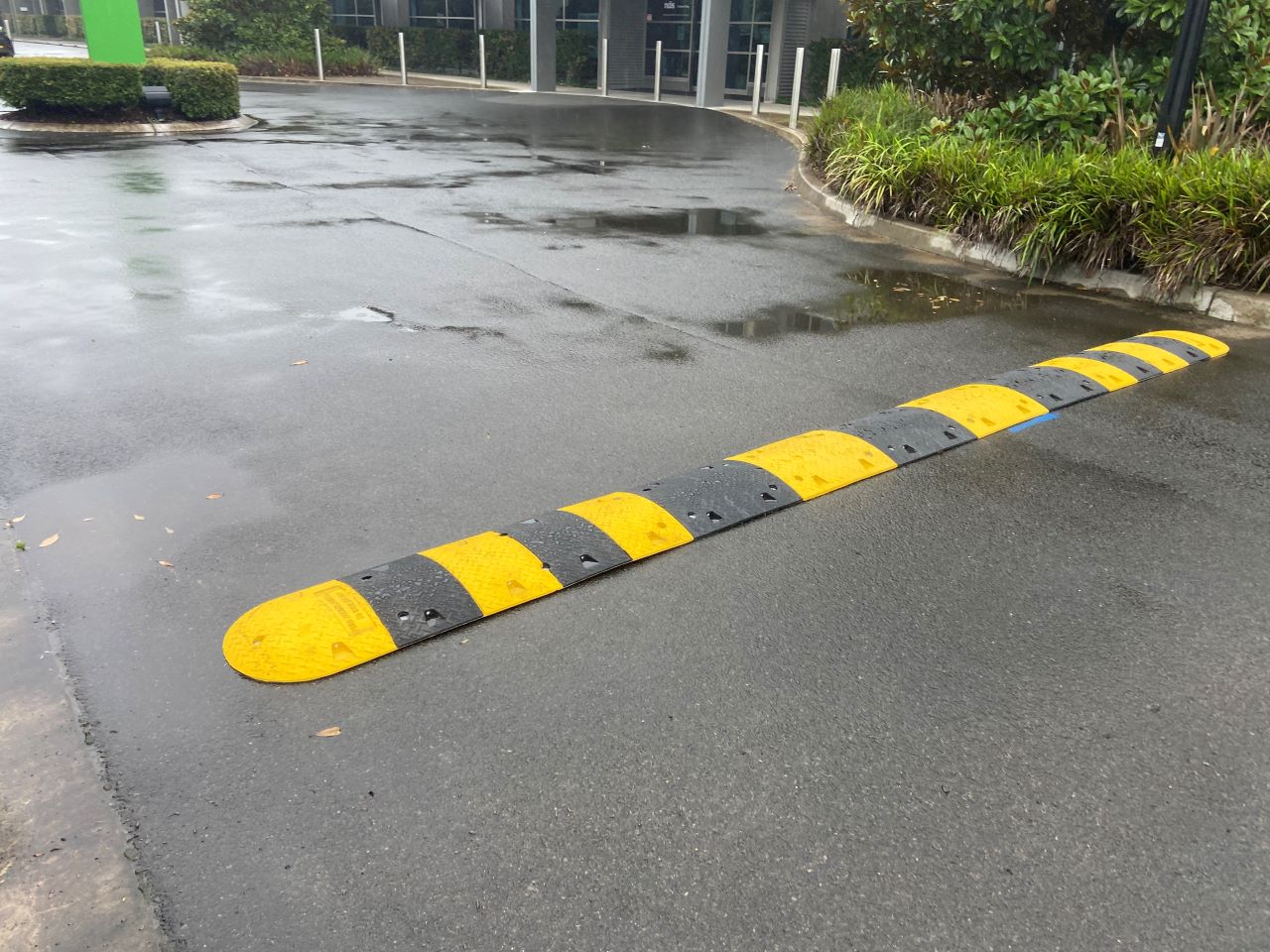
Traffic calming devices like speed bumps and rumble bars are essential for road safety, especially in high-traffic locations like parking lots, industrial zones, private roads, and housing developments. These traffic control devices may wear or sustain damage over time due to factors such as heavy use, extreme weather, or incorrect installation.
But when is it time to replace a damaged speed hump or rumble bar, and what should you consider before doing so? The signs that it’s time for a replacement, the risks of delaying action, and how quality replacements can ensure safety and compliance are all important factors.
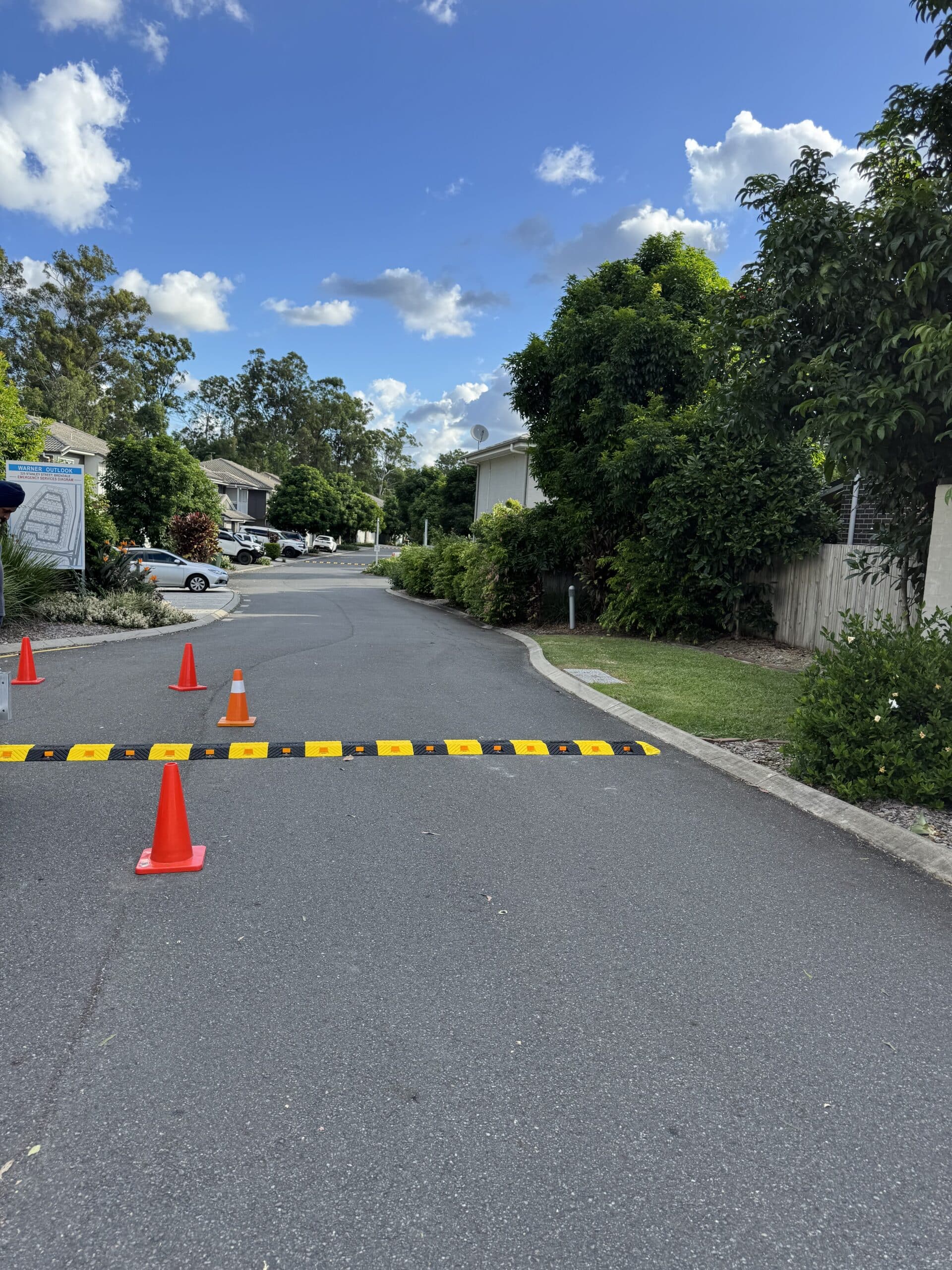
Before discussing when to replace them, it’s essential to understand the specific roles that speed humps and rumble bars serve.
Speed humps are raised areas placed across the roadway, typically designed to slow vehicles to between 10 and 25 km/h. Unlike speed bumps, which are more aggressive and suitable for private areas like car parks, speed humps are gentler and commonly found on public roads and thoroughfares.
On the other hand, rumble bars are more minor raised elements that serve as tactile and auditory alerts for drivers. They cause a vibrating sensation and a sound that grabs attention, often used in areas where speed reduction or awareness is crucial—such as near pedestrian crossings, sharp bends, or industrial sites.
Both devices are indispensable in enhancing safety and guiding driver behaviour. However, their effectiveness relies heavily on their condition.
There are several reasons why speed humps or rumble bars might get damaged. Knowing these can help anticipate maintenance or replacement needs.
Heavy Traffic Loads: In commercial or industrial areas, large trucks and heavy machinery can wear down traffic calming devices more quickly than light vehicle traffic.
Poor Installation: Incorrect installation, such as inadequate anchoring or inferior materials, might result in the early failure of these devices.
Weather and Environmental Exposure: Extreme temperatures, water ingress, and UV exposure can degrade materials over time, especially if the speed hump or rumble bar is not designed and engineered correctly.
Accidental Impact: High-speed impacts, particularly drivers who ignore signage or traffic flow rules, can crack or dislodge these features.
General Wear and Tear: Like any product exposed to continuous stress, both speed humps and rumble bars naturally degrade over time, especially in high-use environments.
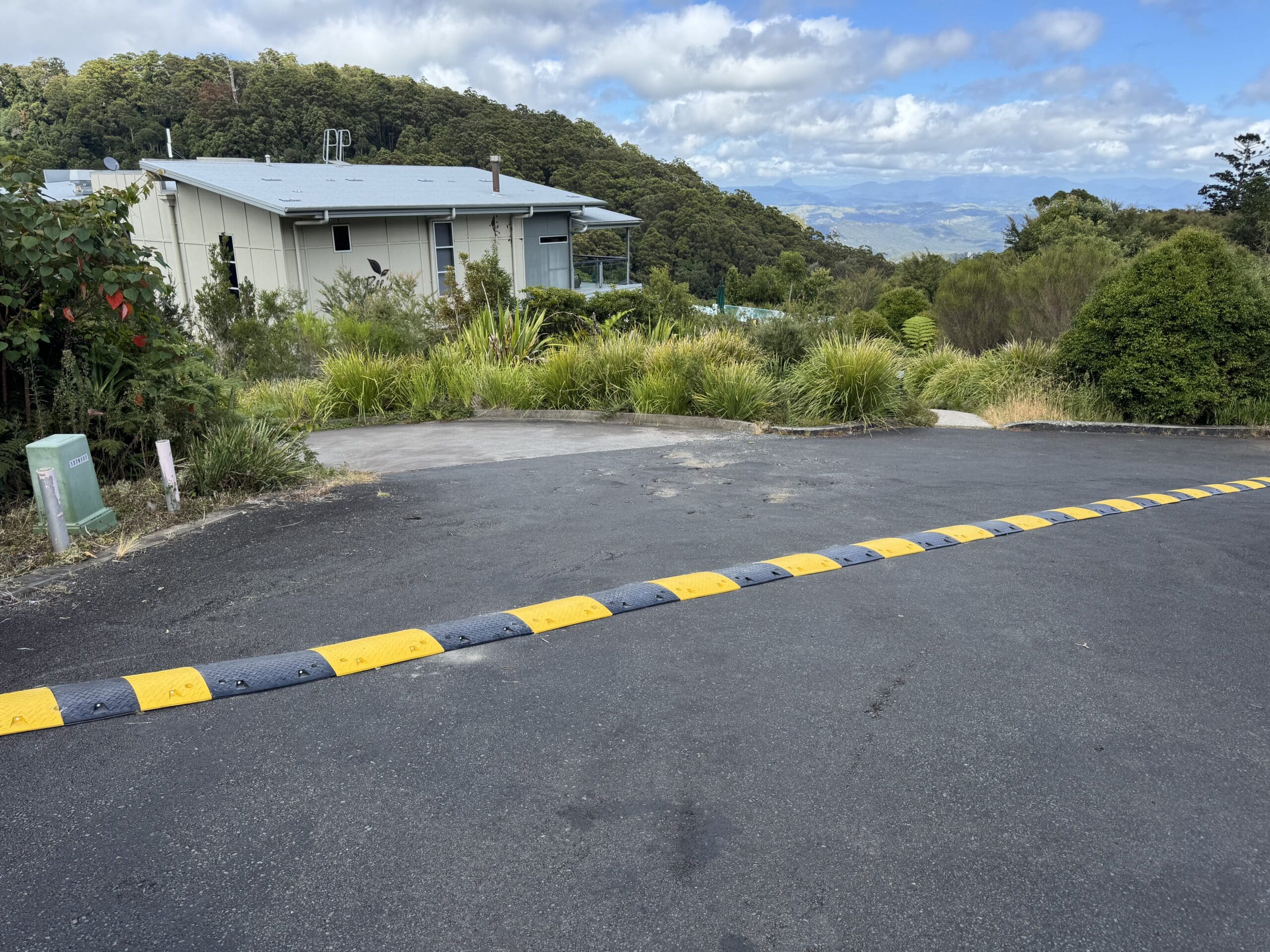
While regular inspection and maintenance can prolong the life of traffic calming devices, some indicators signal it’s time for a replacement:
Surface cracks may appear minor initially, but they can quickly grow due to repeated pressure from vehicles. Once the structural integrity is compromised, the device no longer functions effectively.
Speed humps and rumble bars are typically bolted or fixed to the road surface. Parts that become loose or completely detached can pose significant risks to drivers and pedestrians. Worse, they can end up as road debris.
Over time, the shape of these devices can degrade—especially if made from rubber or plastic materials. If the profile is worn down or flattened, it will not deliver the required speed reduction or alert response.
Most traffic calming devices include reflective markings or bold colour contrasts (yellow and black, for instance) to improve visibility. If these markings fade, the effectiveness is reduced, especially at night or in poor weather conditions.
If residents, workers, or drivers begin complaining about ineffectiveness—or if you notice a spike in near misses or minor accidents—it could be a sign your existing equipment is no longer doing its job.
It might be tempting to defer replacement, especially if the damage seems minor. However, the risks can far outweigh the short-term savings:
Traffic calming devices should be inspected every 6–12 months, depending on traffic volume and environmental conditions. Frequent inspections allow you to identify minor faults before they become significant problems. In some locations, our team at Speed Humps Australia can assist with these inspections. Contact us for more information.
Replacement cycles can vary. Rubber or plastic speed humps and rumble bars might last 5 to 7 years under regular use, while more durable polyurethane or steel versions could last much longer.
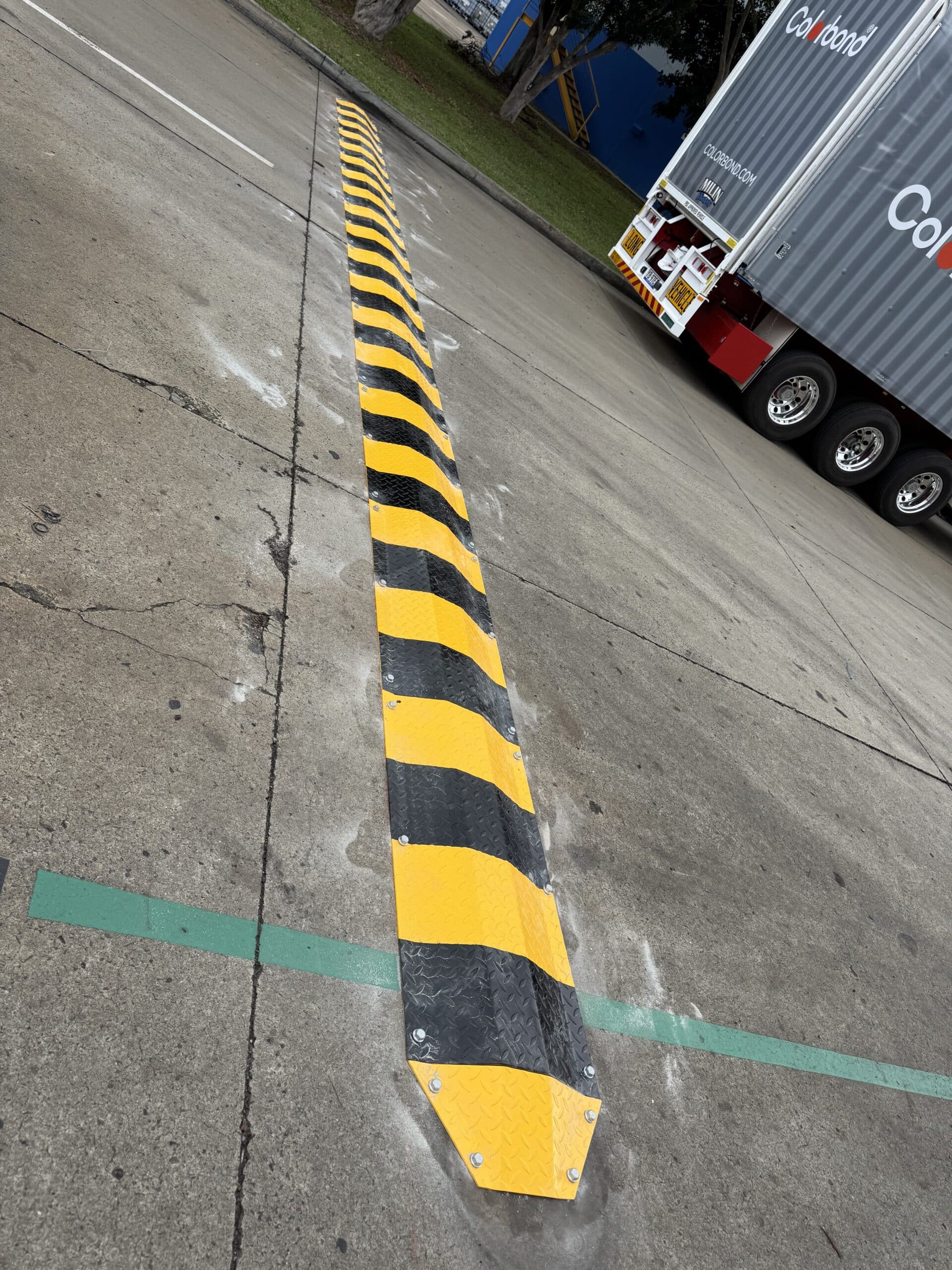
When it comes time to replace your speed humps or rumble bars, choosing a reputable supplier is essential. High-quality materials, certified designs, and competent installation can help your traffic calming system last longer and operate better.
At Speed Humps Australia, we specialise in premium traffic management products, offering reliable solutions tailored to Australian conditions. Whether you need a new installation, want to upgrade an existing scheme or need to conduct an inspection, we can help you maintain a safe environment for everyone.
When considering traffic safety infrastructure, don’t stop at just replacing damaged speed humps or rumble bars. Other safety products that can help improve the overall effectiveness of your safety system include:
Wheel Stops: Essential in parking spaces to prevent vehicles from over-shooting their bays.
Rumble Strips: Often confused with rumble bars but typically installed linearly for long roadways or high-risk areas.
All these elements work together to create a safe and efficient traffic flow, particularly in high-traffic areas like warehouses, car parks, and logistics centres.
Keeping your traffic-calming infrastructure in peak condition isn’t just about following regulations—it’s about showing a commitment to safety, efficiency, and care. Knowing when to replace a damaged speed hump or rumble bar might be the difference between a safe and hazardous environment for users.
Inspect regularly, act swiftly when damage is spotted, and invest in high-quality materials and professional service. Whether it’s a cracked or lose speed hump, or simply aging equipment, timely replacement ensures continued safety and peace of mind.
If you’re unsure about the condition of your current installations or need expert advice on replacements, reach out to us at Speed Humps Australia. We’re here to support your journey towards safer roads and workplaces.

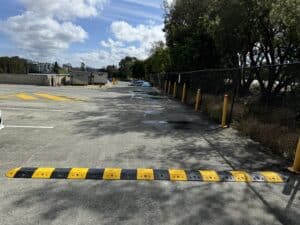

For 10 years, our focus has been on one thing: to provide one style of product and to do it well.
Our wheel stops, speed humps and rumble bars meet Australian Standards, don’t fade, and we’ve never needed to replace one.

For 10 years, our focus has been on one thing: to provide one style of product and to do it well.
Our wheel stops, speed humps and rumble bars meet Australian Standards, don’t fade, and we’ve never needed to replace one.